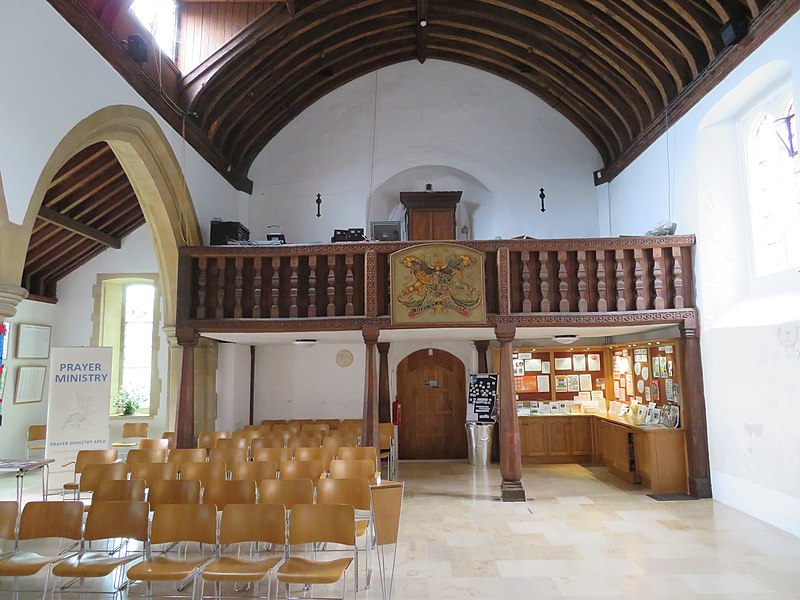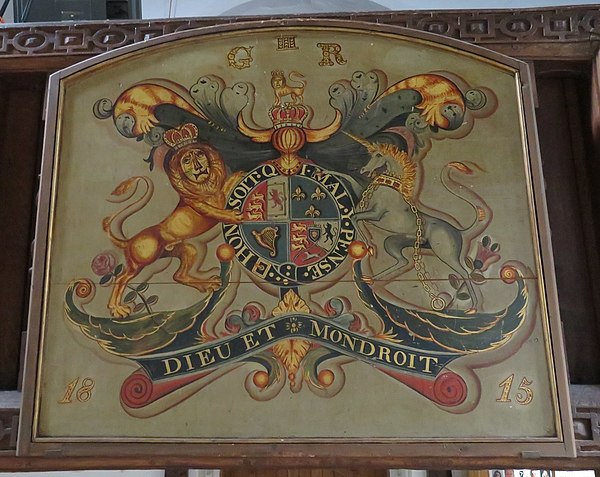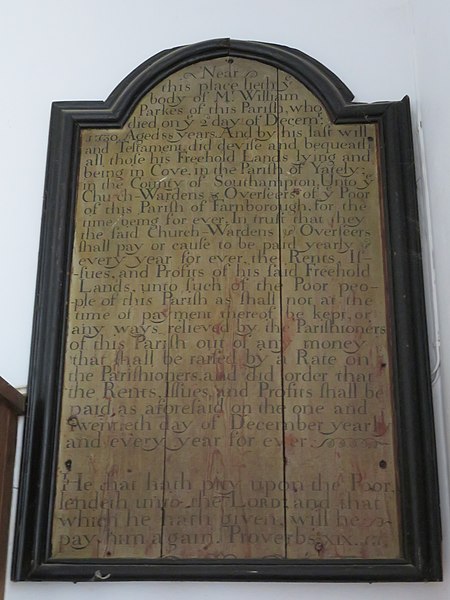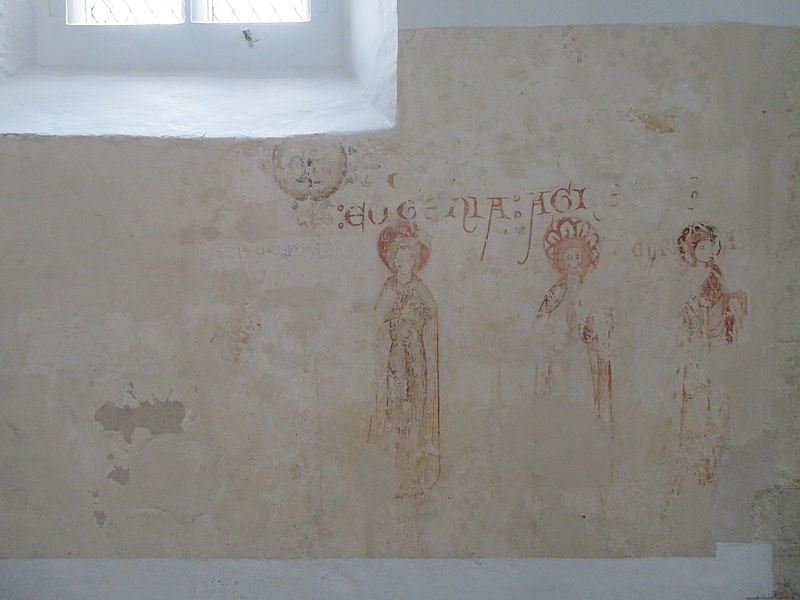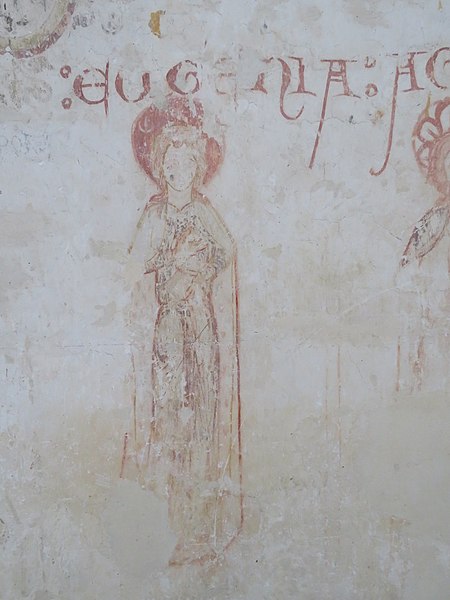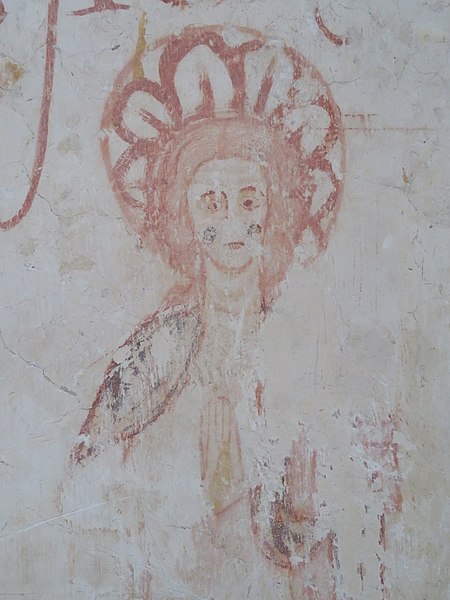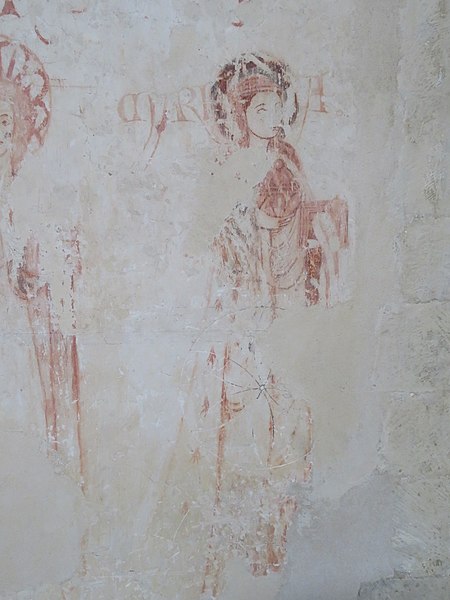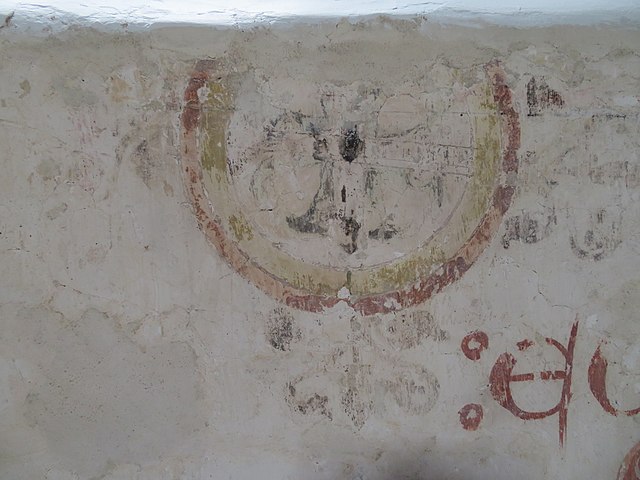Diary of a Rambling Antiquarian
Tuesday, 11 September 2018
Farnborough
All summer long I have been meaning to visit St Peter's, the parish church of Farnborough in Hampshire, after attending a concert there earlier in the year. After months of unusually sunny weather, I finally decide to go on a cloudy early autumn day. The church dates back to at least the early 13th century, although it does not appear to be a particularly interesting church from the outside.
St Peter's Church from the north-west
I circle around the church, which has been extensively enlarged over the centuries so that it no longer has the shape of a typical church. Then I enter through the glass door of the north porch, which reflects me as I photograph it. The porch is 15th-century, and the capital and moulding of the doorway, unfortunately semi-obscured by the porch, date to circa 1200.
North entrance to the church
Inside, the church has a light and spacious feel, with a modern pewless decor that is not entirely out of harmony with the 18th and 19th-century wall monuments and the 17th-century wooden gallery on the west end.
West end of the church interior
The board hanging from the gallery shows the coat of arms of George III. It is dated 1815, but by design or accident it actually shows the coat of arms that was used from 1760 to 1801.
Board displaying the coat of arms of George III
Wooden board recording a bequest to the poor of the parish by William Parkes (d. 1730)
Turning to the north wall, immediately to the west of the north door, is a sight most pleasing. Wonderfully well-preserved are the medieval wall paintings of three female saints, their names lettered large and clear in beautiful calligraphy: Eugenia, Agnes, and Maria (i.e. Mary Magdalene). These paintings date to the early 13th century according to the information sheet written by Ann Ballantyne, a freelance conservator of mediaeval wall paintings. As the Bishop of Winchester held the Manor of Farnborough at that time, they are attributed to the "Winchester School". The paintings were discovered and partially uncovered in the mid 19th century, and later covered with a glazed wooden frame. It was not until 1986 that the impediments to viewing the paintings were removed, and the figures of the saints completely revealed. They are now thankfully allowed to stand in their own glory, unencumbered by any protective frame, watching over the main church entrance.
Medieval wall paintings of three female saints
There are traces of painting for a fourth saint to the left of Eugenia, as well as smudges of paint above Agnes, suggesting that there may have been other paintings above them.
Saints Eugenia, Agnes and Maria
Saint Eugenia
Eugenia holds her breast with her right hand, through a split in her dress. She had been living a secret life as an abbot, but accused of adultery she had been brought before the judge, who just happened to be her father, and so to prove her innocence she showed her father that she was in fact a woman.
Detail of Saint Eugenia
Saint Agnes
Her name should be written AGNETIA or AGNETIS, but the N and E are partially lost, and the last three letters completely missing, although the final colon separator shows the length of the name.
Detail of Saint Agnes
Saint Maria
Maria is identified as Mary Magdalene as she holds a pot of ointment for anointing the feet of Jesus.
Detail of Saint Maria
Painted in semi-profile this picture is particularly stunning in its lifelikeness.
Consecration cross above left of Saint Eugenia
There would have been twelve consecration crosses originally, but only this one and two other discovered on the west wall in 1986 survive. Candles would have been burnt before the crosses on the anniversary of the consecration of the church.
Churches | Hampshire | Medieval wall paintings
Index of Rambling Antiquarian Blog Posts
Rambling Antiquarian on Google Maps


